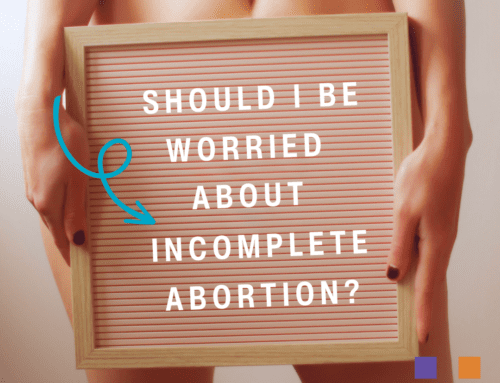
Why do some people say miscarriage and abortion are the same?
In the medical community, miscarriage and abortion are known as spontaneous abortion (“miscarriage”) and elective or induced abortion (“abortion”). In our society, these are simply referred to as miscarriage and abortion.
When some discover that the word “abortion” is in the term spontaneous abortion, they make the argument that the processes are the same. However, many medical terms share language! For example, degenerative disc disease and neurodegenerative disorder. One refers to spinal issues and one could refer to Alzheimer’s. They may share the term degenerative, but they are not the same.
Confusion can also arise because both can involve a procedure called a dilation and curettage (D&C). In the case of spontaneous abortion (miscarriage) this is done after natural death in the womb if there are complications with pregnancy tissue passing on its own. In the case of induced abortion (abortion), it is the cause of death.
Both spontaneous abortion and induced abortion refer to the ending of pregnancy, but they are different medical, cultural, and legal terms!
How are abortion and miscarriage different?
→ Spontaneous abortion (miscarriage) refers to the natural death in utero of an embryo/fetus prior to 20-24 weeks.
Blackshaw and Rodger note that spontaneous abortion (miscarriage) can be caused by chromosomal abnormalities, immunological conditions, thrombophilias, endocrinological causes, uterine malformations, and acute maternal infections. These issues are the cause of death, the spontaneous abortion is what follows as tissue is expelled. If the pregnancy is large or if you are bleeding heavily, your ob-gyn may recommend a procedure called dilation and curettage (D&C). This is usually is done in the hospital and the cervix is dilated and an instrument is used to remove the remaining tissue from the uterus.

→ Induced abortion (abortion) is a defined, particular cause of death elected to end a pregnancy at any time during gestation.
This is typically done a few ways:
- By medication: This has become the most common type of induced abortion and involves taking two medications. The first medication is a progesterone cell blocker. The lack of progesterone to the pregnancy causes the fetus to no longer receive nutrients which means it can no longer develop and will die. The second medication induces labor. This is supposed to expel all tissue in the uterus. So the fetus was developing and growing before medication was taken: natural death did not occur in utero.
- By suction/aspiration: This is completed by numbing and dilating the cervix and then a cannula is placed inside to remove the pregnancy. The fetus may come out in one piece or in pieces. So the fetus was developing and growing before this procedure started: natural death did not occur in utero.
- By dilation and evacuation. This requires a needle to be inserted into fetus’ heart for dogitoxin injection which stops cardiac activity. Then the cervix is numbed and dilated. The baby is surgically cut into pieces to remove. So the fetus was developing and growing before this procedure started: natural death did not occur in utero.
So, what’s legal and illegal?
New Kentucky Laws at the time of this post prevent induced abortions and reads that no person may knowingly:
- Administer to, prescribe for, procure for, or sell to any pregnant woman any medicine, drug, or other substance with the specific intent of causing or abetting the termination of the life of an unborn human being
- Use or employ any instrument or procedure upon a pregnant woman with the specific intent of causing or abetting the termination of the life of an unborn human being.

The law also specifically states:
The following shall not be a violation of subsection (3) of this section:
- For a licensed physician to perform a medical procedure necessary in reasonable medical judgment to prevent the death or substantial risk of death due to a physical condition, or to prevent the serious, permanent impairment of a life-sustaining organ of a pregnant woman.
So Kentucky laws allow for miscarriage and ectopic pregnancy care. Ectopic pregnanciess are considered non-viable because they can not grow where they are at and the continued growth may cause rupture of a Fallopian tube and the death of the mother.
What now?
At Clarity, we want to arm women with truth to make educated and informed decisions for themselves. Fear should never be a part of the equation. It is a scare tactic to insist that you cannot receive care for miscarriage, ectopic pregnancy, or because your life is in danger in the state of Kentucky and simply not true!
Medical professionals should be eager to provide the treatment you need for spontaneous abortion (miscarriage). If they are not, find a new provider.
Sources:
-
Blackshaw, BP, and Rodger, D (2019). ‘The Problem of Spontaneous Abortion: Is the Pro-Life Position Morally Monstrous?’, The New Bioethics, 25(2): 103-120.
-
Berg, A (2017). ‘Abortion and miscarriage’, Philosophical Studies, 174: 1217-1226.
-
Jarvis, GE (2017). ‘Early embryo mortality in natural human reproduction: What the data say [version 2]’, F1000Research, 5:2765.
-
ACOG (2021). ‘Early pregnancy loss’ , Your Pregnancy and Childbirth, 7th edition, 40: 645-647













